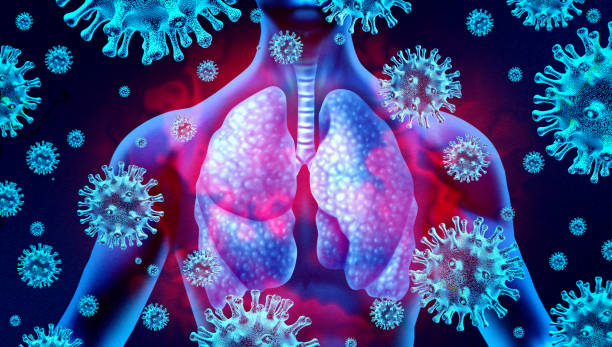Garlic (Allium sativum), is used widely as a flavoring in cooking, but it has also been used as a medicine throughout ancient and modern history; it has been taken to prevent and treat a wide range of conditions and diseases.
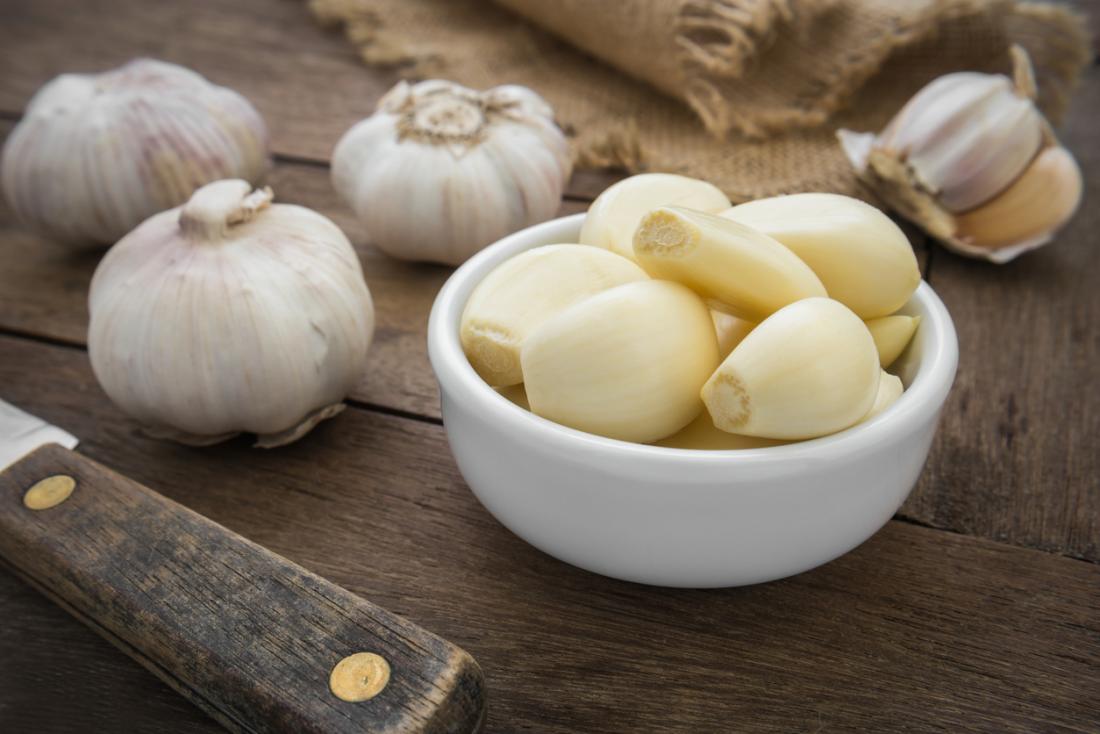
Fast facts on garlic
- In many countries, garlic has been used medicinally for centuries.
- Garlic has a range of health benefits, both raw and cooked.
- It has significant antibiotic properties.

History
Garlic has been used all over the world for thousands of years. Records indicate that garlic was in use when the Giza pyramids were built, about 5,000 years ago. From Ancient Egypt, garlic spread to the advanced ancient civilizations of the Indus Valley (Pakistan and western India today). From there, it made its way to China.
Throughout history in the Middle East, East Asia, and Nepal, garlic has been used to treat bronchitis, hypertension (high blood pressure), TB (tuberculosis), liver disorders, dysentery, flatulence, colic, intestinal worms, rheumatism, diabetes, and fevers. The French, Spanish, and Portuguese introduced garlic to the New World.
Garlic Benefits and Uses
Garlic has a very long folk history of use in a wide range of ailments such as ringworm, Candida and vaginitis where its fungicidal, antiseptic, tonic and parasiticidal properties have proved of benefit as recommended by Indian Ayurveda.
Learn more about garlic benefits and uses with Pritish Kumar Halder.

Treats Dysentery
The plant produces inhibitory effects on gram-negative germs of the typhoid-paratyphoid-enteritis group, indeed it possesses outstanding germicidal properties and can keep amoebic dysentery at bay. Garlic benefits also include anticancer activity.

Controls Diabetes
Benefits of Garlic include reducing glucose metabolism in diabetics, slows the development of arteriosclerosis and lowers the risk of further heart attacks in myocardial infarct patients. Externally, the expressed juice is an excellent antiseptic for treating wounds.

Lowers Cholesterol
There are two kinds of cholesterol. LDL cholesterol and HDL cholesterol. The former is bad for human health. Garlic is rich in the Ellison compound which effectively prevents LDL cholesterol from oxidizing. All those who have high cholesterol levels should include this herb in their daily diet.

Thrombosis
Benefits of Garlic include fighting against thrombosis by reducing platelet aggregation for eye care. Garlic is rich in nutrients like selenium quercetin and vitamin C, all of which help treat infections and swelling.

Treats Acne
Half the people in the world suffer from mild to severe forms of acne. Uses of Garlic include treating acne. Garlic may be used, along with other ingredients like honey, cream and turmeric, to treat acne scars and prevent the initial development of acne garlic acts as a cleanser and an antibiotic substance for soothing skin rashes.
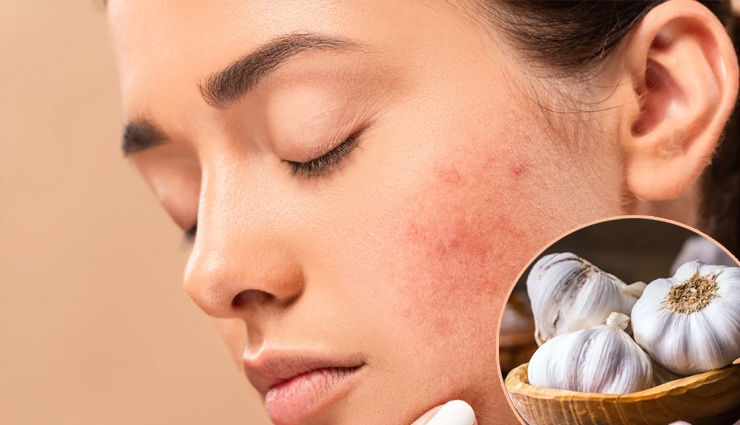
Heart Health
Garlic protects our heart against cardiovascular problems like heart attacks and atherosclerosis. This cardio protective property can be attributed to various factors. With age, the arteries tend to lose their ability to stretch. Garlic, helps reduce this and may also protect the heart from the damaging effects of free oxygen radicals.
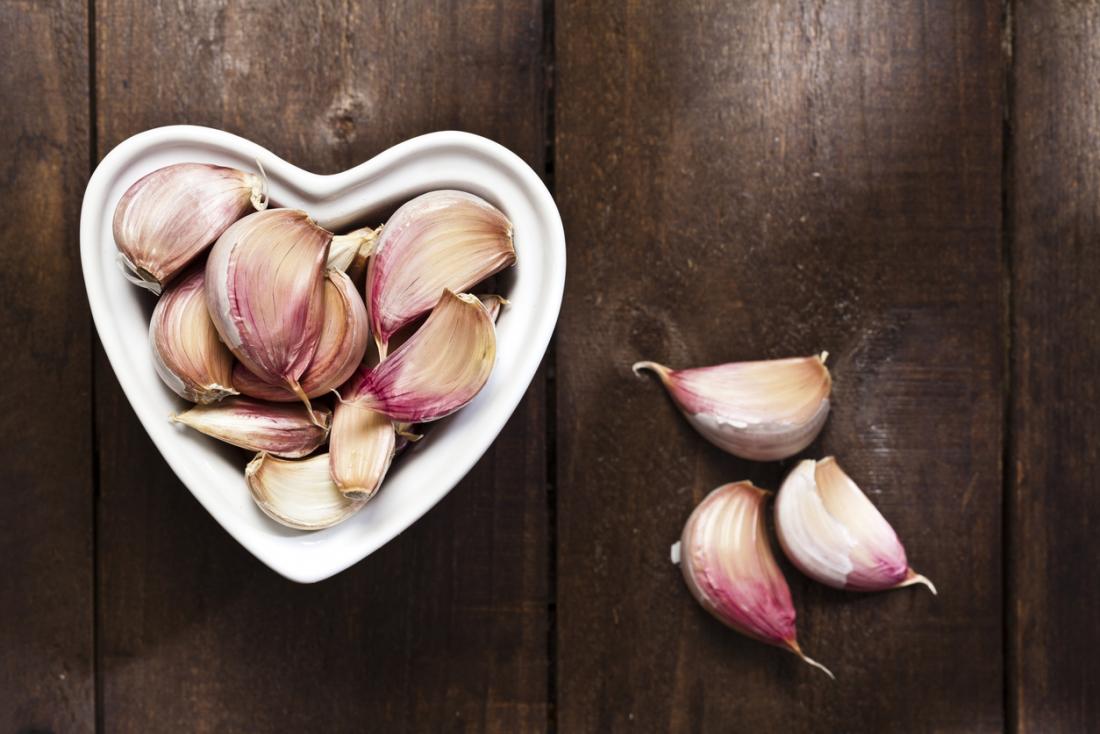
Respiratory Problems
Daily use of garlic might reduce the frequency and number of colds. Its antibacterial properties, help in treating throat irritations. Garlic may also reduce the severity of up respiratory tract infections. Its benefits in disorders of the lungs like asthma, difficulty of breathing make it a priceless medicine.
Weight Management
Many researchers believe that obesity is a state of long-term low-grade inflammation. According to recent research, garlic may help to regulate the formation of fat cells in our body. This may help prevent weight gain.

Chemical Composition
Garlic contains a wealth of sulfur compounds; most important for the taste is allicin (diallyl disulphide oxide), which is produced enzymatically from alliin (S-2-propenyl-L-cysteine sulfoxide) if cells are damaged; its biological function is to repel herbivorous animals. Allicin is deactivated to diallyl dysulphide; therefore, minced garlic changes its aroma if not used immediately. In the essential oil from steam distillation, diallyl dysulphide (60%) is found besides diallyl trisulphide (20%), diallyl sulfide, ajoene and minor amounts of other di- and polysulphides.
Types of Garlic
There are three common types of garlic: hard neck (or stiff neck), soft neck, and elephant garlic.
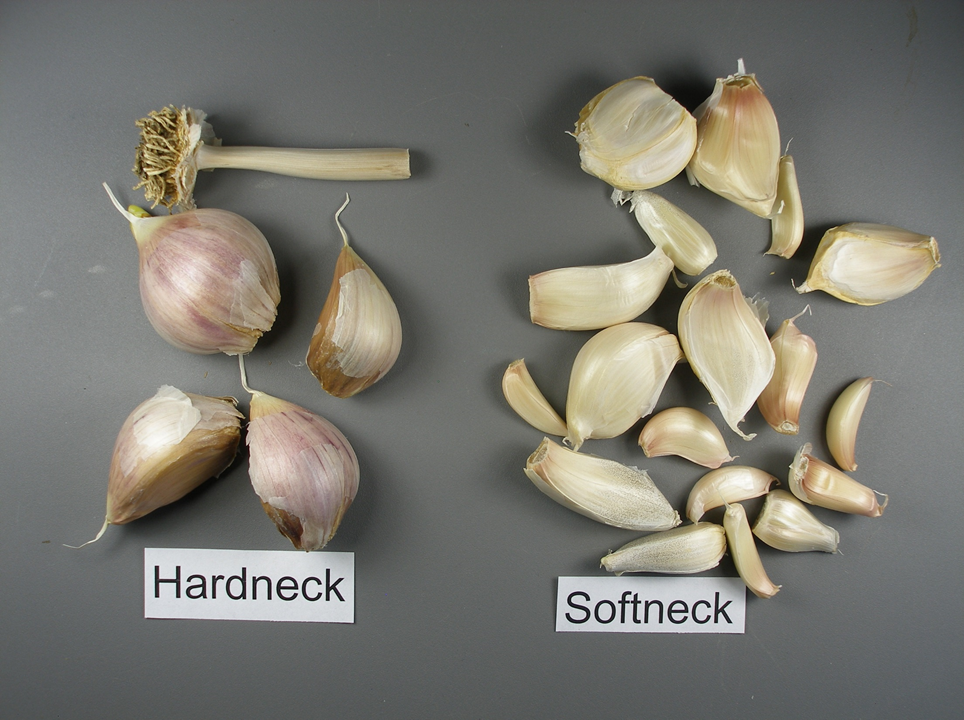
Tips for Harvesting Garlic
It can be tricky to know when garlic is ready to harvest. Don’t guess or rely on the leaf color to tell if cloves are mature. Instead, check by pulling up a bulb in mid- to late June—earlier in warm climates and later in cold climates. Harvest garlic when the head has plump cloves and the skin covering the outside of the bulbs is thick, dry, and papery.
:max_bytes(150000):strip_icc()/harvesting-garlic-1402402_FINAL-a6af5d2ed4fa49939c6f66c3c98c35dc.png)
More Varieties of Garlic
‘New York White’ garlic
Allium sativum ‘New York White’ is also called ‘Polish White’. It’s a hardy, disease-resistant variety for northern regions.
/new-york-white-garlic-2ecd6ae5-cf2d5cc47e6b474ab8ef10e182ada538.jpg)
‘Russian Red’ garlic
This variety of Allium is a hard neck type with purple stripes on its cloves. It is exceptionally winter hardy.

Silver White’ garlic
This Allium cultivar is a soft neck type for warm climates. It produces easy-to-peel white bulbs.

‘Spanish Roja’ garlic
Allium sativum ‘Spanish Roja’ is a hard neck type with medium-hot flavor. The brown-skin cloves are excellent for roasting.

Garlic and the common cold
A team of researchers from St. Joseph Family Medicine Residency, Indiana, carried out a study titled “Treatment of the Common Cold in Children and Adults,” published in American Family Physician.

They reported that “Prophylactic use of garlic may decrease the frequency of colds in adults, but has no effect on duration of symptoms.” Prophylactic use means using it regularly to prevent disease.

Though there is some research to suggest that raw garlic has the most benefits, other studies have looked at overall allium intake, both raw and cooked, and have found benefits. Therefore, you can enjoy garlic in a variety of ways to reap its advantages.
Reference


